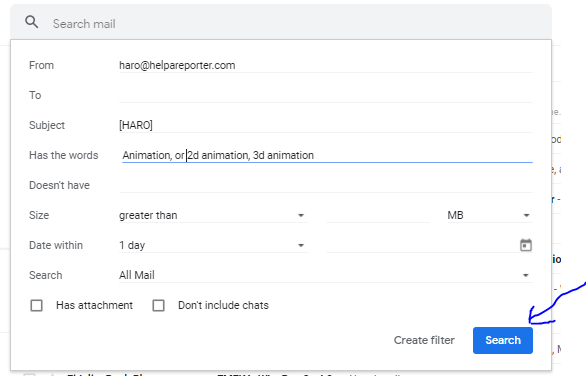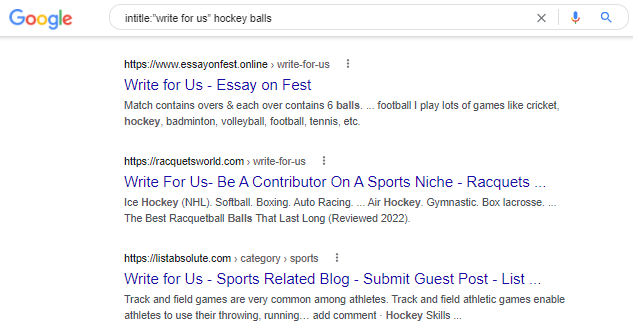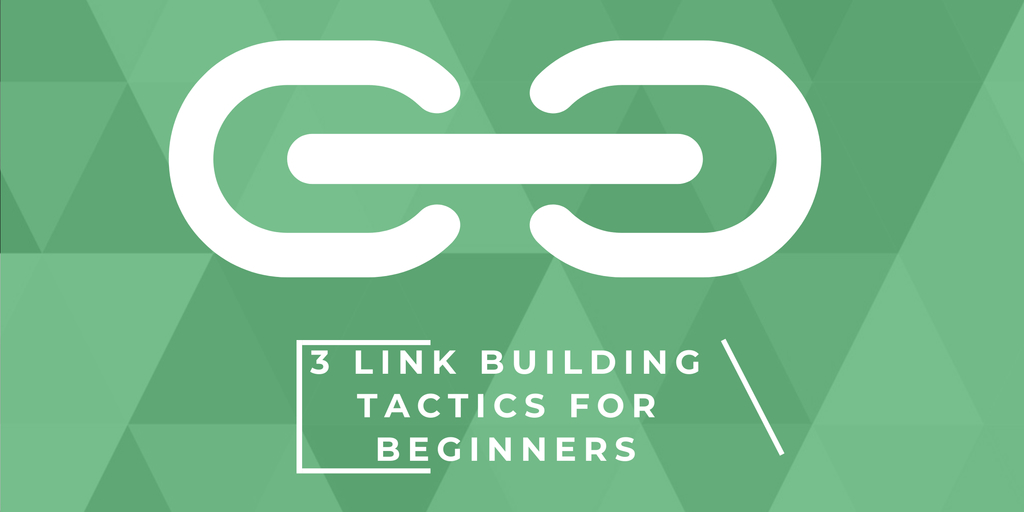Building links to your website is one of the most valuable SEO practices, and it’s a task that can seem complicated to beginners. Link building can be tricky, but with the right mindset, the right tactics, and a good amount of patience, you can become very successful at building links. In this article, we will talk about the step-by-step process to build backlinks to your site, as well as three cookie-cutter link-building tactics that are tried, tested, and completely beginner-friendly.
There are three general stages in link building these are:
- Prospective Stage
- Vetting Stage
- Email outreach Stage
Prospective Stage
When prospecting, you are searching for relevant pages and websites that might link to you. These might be people who are linking to a similar page as the one you are going to create, those who have influence in the industry, or people who are passionate about the topic. The main goal is not to find a perfect list of people; this stage is about finding as many people as possible who fit a specific set of criteria. This criterion is usually dictated by link authority metrics as well as relevance. As a result, you will usually be working with a large and very imperfect set of data.
Vetting Stage
The vetting stage is where you start to refine your list of prospects. These are the people that you will be contacting, so you will need to visit their websites and validate that they are indeed people worth contacting.
Email outreach Stage
The email outreach stage is when you finalize your pitches and start emailing your vetted prospects. You will spend your valuable time and effort at this stage, so try to make it count and don’t rush with it; you don’t want to end up with a pile of SPAM complaints.
Now, depending on the link-building tactic you use, the way you prospect, vet, and craft your email pitches will differ. And this is actually quite difficult when you are new to link building. Fortunately, there are a few dead-simple but super-effective link-building tactics that are completely newbie-friendly. But before we can get tactical, let’s have a fresh definition of link building because there are three main parts in it that will help you with prospecting, vetting, and email outreach.
What is link building?
Link building is the process of building relationships with other relevant site owners who want and will link to your content because it enhances theirs. Now I want to highlight the three main points from this definition: relationship, relevance, and value exchange. We already talked about the relevance in the article what makes a backlink good. In this article, we shall be focusing on the value exchange and what that looks like in some common link-building tactics.
So let’s dig into a few easy link-building tactics, and I will show you what each stage of the link-building process looks like in detail. Plus, I will outline the value exchange for each tactic to give you a better idea of what I mean.
These link building tactics include:
- Get free PR using HARO(Help a Reporter Out)
- Guest posting (guest blogging)
- The skyscraper technique
Get free PR using HARO(Help a Reporter Out)
This is a free service that connects journalists with sources and sources with journalists. Just sign up as a source and select the categories where you are qualified to answer questions. You will then get emails from journalists from various media outlets looking for sources on specific topics. And these are not just your run-of-the-mill publications.
In just a single email, you will see numerous publications indicating interest. Just skim through the topics, and if you find something where you can add value, respond to the journalist with your expert opinion. If they use you as a source, they will usually link back to your site and your social media profiles.
Now the value exchange here is simple. You are exchanging your expert knowledge for a mention and usually a link from an authoritative site. Imagine getting links from authority sources like Reader’s Digest, Inc Magazine, Forbes, and The Huffington Post; that would be great, right? Of course, yes. Now looking at the three stages of link building, the prospecting part is as easy as it gets.
You sign up for a free service, and journalists are actually looking for your help, not the other way around, which makes HARO super beginner-friendly. As for vetting, you can simply scan through the results on a daily basis, but that can be time-consuming. A simple tip you can use is to create a Gmail filter so only relevant emails will surface in your inbox. Just log in to Gmail and click on the caret to bring down the search options.

Next, set the “from” field to [email protected]. Then you will want to set the “subject” to HARO within square brackets since all of their emails include that in the subject line. Finally, set the “Has the words” field to any keywords you want to monitor. And you can also use the OR research operator to include multiple keywords or phrases. Click search to see the results your search filters would include, and check out some of the emails to ensure you are getting relevant results.

If everything looks good, click on the caret again and then click create filter. You will then have the options to apply labels, mark it as important or forward it to another team member to take care of. Now, as for the email outreach part, HARO gives you an email address which will then be forwarded to the journalist. So just respond to the given email address, and write your response. Now obviously, you are not going to be the only person emailing the journalist. So here are a few tips you can use to improve your hit rate:
- Keep your emails as short as needed. Journalists get tons of emails, and if they see a huge wall of text, they probably won’t even give you a response chance.
- Go after topics where journalists are likely looking for multiple sources. For example, a query seeking for “dieticians” to give 11 best foods to burn belly fat. These kinds of requests will usually be your typical listicle-styled posts. So the more responses they accept, the higher your chances of getting mentioned and linked to.
- Respond as quickly as possible. Journalists on HARO will often give a tighter deadline to give themselves time to actually put together a good story. Plus, some journalists believe that people who respond faster are better sources.
- Prioritize questions where you are an expert and use them as the first line in your pitch. There will be days when you can’t respond to every relevant request. So prioritize the ones where you have the highest probability of getting sourced. For example, let’s say you get an email looking for dieticians who can talk about type 2 diabetes and how to prevent them with a keto diet. If you are a dietician, then you might start your email with something like
Hi Frank, my name is mek, and I am a dietician with nine years of experience and a member of the Board of Dietetics/Nutrition.
Clearly, I’m not a dietician, but you get my point. You will likely get their attention when you immediately qualify yourself as the right person to answer the question. Of course, you should be 100% honest, so I wouldn’t claim to be a dietician when I’m not.
- Follow all directions in your query. Please be sure to include your full name, pronouns, title, credentials, and the website you would like linked to your name.
Guest posting (guest blogging)
Guest posting is when you create content for another website. The reason why this strategy works is that there is a clear value exchange. They get great content for free, and almost always, they allow you to link back to your site, whether that is within the content or in the author bio.
Now guest posting also provides another great benefit aside from a potential backlink. You get the opportunity to get exposure to someone else’s audience. They have already done the hard work in building the audience; you just have to write something that will impress the readers.
-
Prospecting Stage
When you are prospecting, you will need to get a list of websites. And there are a few ways you can do that.
- Use Google search operators
- Use Ahrefs content explorer or any other SEO tool you have
Using Google search operators
Go to Google and search for something like intitle:”write for us” wrapped in quotes, and then a keyword related to your niche E.G intitle:”write for us” golf balls. In this case, this query will show us pages that include the phrase “write for us in the title” and have the word “hockey balls” somewhere on the page.

This is a common footprint that websites use to attract guest writers. Now because you will want to write for sites with some kind of link authority, you can use any SEO tool you have, like Ahrefs’ SEO toolbar, to see link authority metrics right within Google’s search results. And if you don’t have an Ahrefs account, you can use their free website authority checker to see the domain ratings of these sites.
Using Ahrefs content explorer or any other SEO tool you have
Content Explorer is a searchable database where you can find pages on any topic along with both social and SEO metrics. To get started, just enter a topic that is related to your niche and run the search. Next, you will want to set some filters to ensure the following.
- You are getting relevant results.
- You are reaching out to websites that have some kind of link authority.
So first, you will have to set the language filter to any language that you will be able to write in. Then set a domain rating filter and set it to a range like 30 to 60. If this is your first-time guest blogging, you may want to set a lower range like 10 to 30 to get practice before pitching more authoritative sites. Or, if you are a seasoned guest blogger, then you can try something like 40 – 70.
Next, enable the “one page per domain filter” to narrow your results to one page per website. This is almost a must-do kind of thing because there’s no point in pitching the same website numerous times. You might be getting around hundreds or thousands of domains and wondering which ones allow guest posts. The truth is you won’t know until you ask. But there is a way to improve your hit rate. And that is to look at websites that have previously accepted guest authors.
To find those sites, just click on the websites tab and make sure that your results are sorted by the number of authors. Basically, the more authors you see, the more probable it is that they accept guest posts. Either that or they have a large staff of writers. From here, you can export the results and then move on to the vetting stage. At this point, you will want to do a quick check to make sure that the websites don’t look spammy and that they are actually relevant to your site.
For example, a site with the domain name “hockeyballs.com” is clearly going to be relevant and not spammy at all, seeing that it’s just a regular eCommerce site. As for the site with its domain name as setricsmat.com, the domain doesn’t look like it’s about golf. And if you visit the site, you may see things like a software company. So you would have to exclude this domain from your outreach list.
Another thing worth checking is the domains’ sitewide organic traffic. To do that, go to site explorer and search for the domain. Next, click on the organic search tab. If the site is getting consistent search traffic, then it’s a good sign that the domain is in good standing with Google.
Domains with bad organic traffic are probably something you would want to exclude when vetting sites. Reason being the huge decline in search traffic is a sign that Google may have penalized the website. So you probably wouldn’t want to associate your domain with theirs.
-
Vetting Stage
When you are vetting, you would likely want to find around ten times the number of posts you can write in a week. For example, if you can write two posts per week, then try and find 20 vetted sites. The reason being most people wouldn’t accept your post, let alone respond to you.
-
Email Outreach Stage
When you are pitching a website for guest post, ideally, you want to come up with a good reason as to why they should accept your post. Free content is great and all, but it’s not necessarily so convincing that everyone will accept it. So take some time to do your research on the site. See how your expertise can be helpful for their audience or business.
For example, if you look at the blog for “hockeyballs.com” and find out that they have content on “the best hockey balls for kids.” And after searching through their site, you found out that they have another guide on the best hockey balls for the longest distance. Now they are missing out on a lot of these “best hockey balls for [blank].” And seeing as they are in the business of selling hockey balls, you could easily pitch them topics on something like “top 7 best field hockey balls for 2022”. So you might send them an email and say something like
“Hey (whatever the editors’ name is)
I was digging through your site and saw that you have a couple of posts on the best hockey balls for kids and for distance. But I was pretty surprised to see that you don’t have one for the top 7 best field hockey balls for 2022.
Being a Beautician myself, I spent hundreds of dollars on balls and countless hours searching for the best hockey ball for me.
If you are open, I’d love to write a post for you about how to find the top 7 best hockey balls for 2022. I am happy to share all the data and stats, which I think will help people make an informed decision as they shop through your store.
Is that something you would be open to?
Cheers,
Mek”
Now with this outreach email, you are showing them that you have done your research on their site, you are a good hockey player, you have some unique data which you spent time and money to get, and you are also showing them how your post could help them get more sales.
The skyscraper technique
The skyscraper technique is a link-building tactic where you find content with many links, create your own version of the topic but improve on it, and then reach out to those linking to the popular post and ask them to link to yours.
The first thing to do here is to find content that is relevant to a topic you want to create content on. Let’s say you want to write about “avocado smoothie” to get started, go to Ahrefs content explorer, and search for something like “avocado (smoothies OR recipes OR shakes).” Set the search mode to “In title” and then run the search to keep things extra-relevant. The result would be showing you pages that mentioned the word “protein” and one of the words in the title (smoothies OR recipes OR shakes)—seeing as they are pretty much the same.
Secondly, you need to find pages that have lots of links. Set the referring domains filter of your Ahrefs content explorer to a minimum value of something like 50; but depending on the topic you are searching for; you can play around with this number.
The third and final thing you need to do is to find content that has a weakness in it that you can noticeably improve on. The concept of “higher quality” is kind of subjective, and your outreach emails need to communicate why they should link to you instead of or in addition to the page they are currently linking to. So at this stage, we are looking for the most objective yet subjective weakness in these popular pages. Some of the things to look out for are
- If the original piece is outdated and contains inaccurate information
- If you have unique data that is particularly impressive or meaningful
- Is your content significantly better from a UX standpoint
When you have found these weaknesses, create better content as a competing page, then reach out to the people linking to this page with a convincing pitch.
Now prospecting and vetting are pretty straightforward. But the most challenging part of link building and the part that makes link building challenging is outreach. So to learn more on how to craft highly effective outreach emails, click here.




Pingback: HOW TO DO BLOGGER OUTREACH THAT LEADS TO BACKLINKS. - MMO Guide